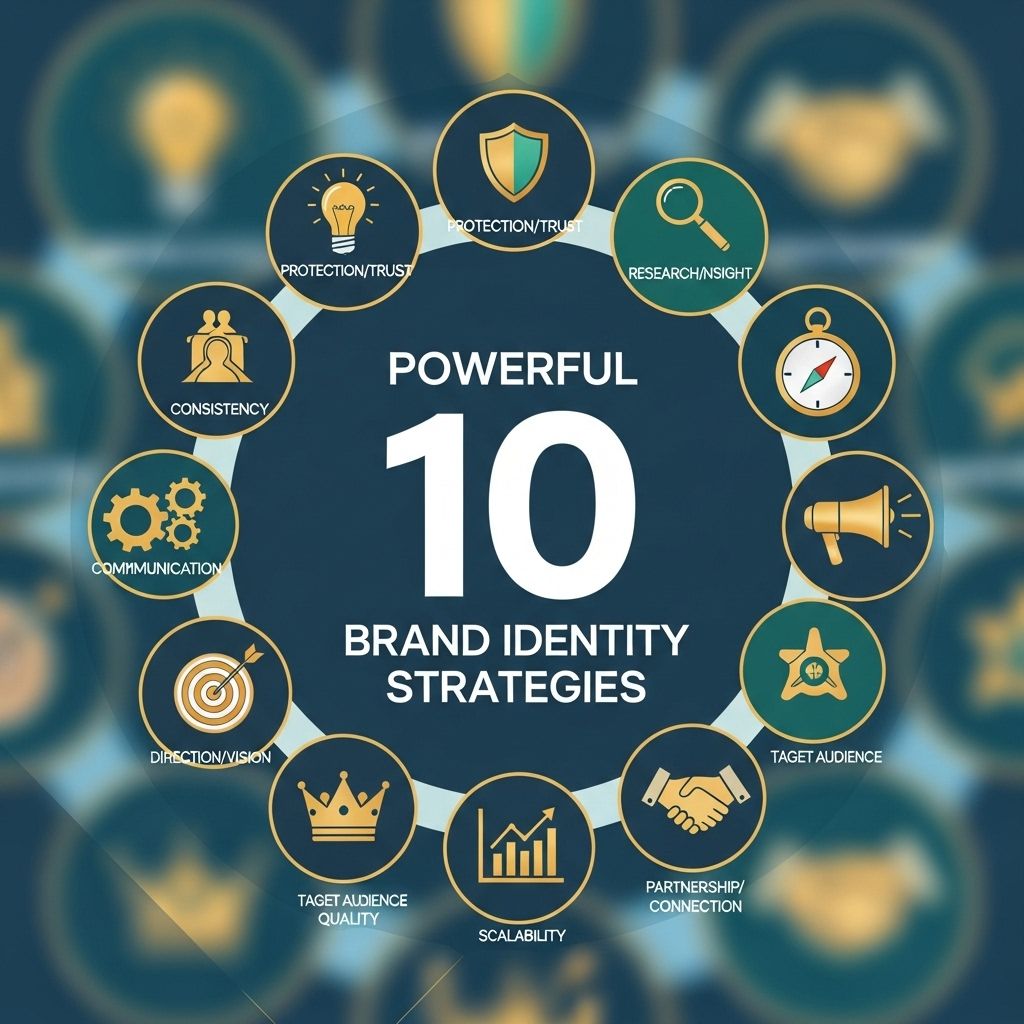In the modern marketplace, establishing a compelling brand identity is vital for success. Effective brand identity not only helps differentiate your business but also fosters customer loyalty and trust. Brand identity encompasses visual elements, messaging, and the overall perception of your brand. This article delves into ten powerful strategies to enhance your brand identity.
Understanding Brand Identity
Before diving into the strategies, it is essential to understand what brand identity entails. Brand identity is the collection of elements that a company creates to portray the right image to its consumer. It includes:
- Logo and visual aesthetics
- Brand voice and messaging
- Core values and mission
- Customer experience
The Importance of Brand Identity
A strong brand identity can lead to:
- Increased Recognition: A unique and consistent brand makes it easier for customers to recognize your products and services.
- Customer Loyalty: A well-defined identity fosters an emotional connection with customers, encouraging repeat business.
- Competitive Advantage: A strong brand differentiates you from competitors and can sway consumer choices in your favor.
- Perceived Value: A strong brand identity can justify higher pricing due to perceived quality.
1. Define Your Brand’s Mission and Values
The foundation of any successful brand identity lies in a clear mission and set of values. These elements guide your brand’s strategy and messaging. To define your mission and values:
- Conduct market research to understand what your audience values.
- Articulate your brand’s purpose and what you stand for.
- Ensure that your values guide decision-making across all levels of your organization.
2. Create a Distinctive Logo
A logo is often the first visual element that customers associate with your brand. To create a memorable logo:
- Keep it simple: Complex logos can be hard to recognize.
- Ensure it reflects your brand’s personality and values.
- Choose colors thoughtfully; colors evoke emotions.
Examples of Successful Logos
| Brand | Logo Description |
|---|---|
| Nike | Swoosh symbolizes movement and speed. |
| Apple | Minimalist apple silhouette represents innovation. |
| McDonald’s | Golden arches are instantly recognizable worldwide. |
3. Develop a Consistent Visual Identity
Your brand’s visual identity goes beyond just the logo. It includes colors, typography, imagery, and overall design style. For consistency:
- Create brand guidelines to document your visual identity.
- Use the same color palette across all platforms.
- Choose fonts that are readable and reflect your brand’s tone.
4. Craft a Unique Brand Voice
Your brand voice should resonate with your target audience and align with your brand’s personality. To develop a unique brand voice:
- Understand your audience’s language and preferences.
- Define your tone—should it be formal, friendly, humorous, etc.?
- Consistency is key; ensure all communications reflect this voice.
5. Engage in Storytelling
Storytelling is a powerful tool for building a connection with your audience. A compelling brand story can communicate your values and mission in an engaging way. Consider the following:
- Share your brand’s origin story.
- Highlight customer experiences and testimonials.
- Utilize various formats such as videos, blogs, and social media posts.
6. Build an Online Presence
In today’s digital world, a strong online presence is crucial. Utilize social media, websites, and other digital platforms to enhance your brand identity:
- Maintain a professional website that showcases your brand.
- Utilize social media to engage with customers and share content.
- Ensure your online content aligns with your brand identity.
7. Foster Community Engagement
Building a community around your brand can significantly enhance your identity. To engage your audience:
- Organize events or webinars relevant to your brand.
- Encourage user-generated content on social media.
- Support local causes or charities to connect with your community.
8. Leverage Influencer Collaborations
Partnering with influencers can expand your brand’s reach and add credibility. Ensure the influencers you collaborate with align with your brand values. Strategies include:
- Choose influencers whose audience matches your target demographic.
- Develop authentic partnerships; avoid one-off promotions.
- Monitor the results of collaborations to gauge effectiveness.
9. Maintain Brand Consistency Across Channels
Consistency across various platforms and customer touchpoints is crucial for reinforcing brand identity. To achieve this:
- Audit all existing marketing materials for consistency.
- Use the same messaging and visuals across all platforms.
- Train employees on your brand standards and messaging.
10. Regularly Evaluate and Adapt
The marketplace is continually changing, and so should your brand identity. Regularly evaluate your brand’s performance and adapt as needed:
- Conduct customer feedback surveys to assess perceptions.
- Analyze your brand’s metrics using tools like Google Analytics.
- Stay informed about market trends and competitor strategies.
Conclusion
Building a powerful brand identity requires a strategic approach, commitment, and consistency. By implementing these ten strategies, businesses can create a robust brand identity that resonates with their audience, fosters loyalty, and ultimately drives growth. Remember, your brand identity is more than just a logo; it’s the essence of who you are and what you stand for in the marketplace.
FAQ
What are brand identity strategies?
Brand identity strategies are plans and tactics that businesses use to create a unique image and personality for their brand in the minds of consumers.
Why is brand identity important for a business?
Brand identity is important because it helps distinguish a business from its competitors, builds customer loyalty, and enhances recognition and trust.
What are the key components of a strong brand identity?
Key components of a strong brand identity include a distinctive logo, color scheme, typography, messaging, and a consistent tone of voice.
How can storytelling enhance brand identity?
Storytelling enhances brand identity by creating emotional connections with consumers, making the brand more relatable and memorable.
What role does customer feedback play in brand identity?
Customer feedback plays a crucial role in shaping brand identity by providing insights into consumer perceptions and helping brands adjust their messaging and strategies.
How can social media influence brand identity?
Social media influences brand identity by allowing brands to engage directly with their audience, showcase their personality, and build a community around their values.




